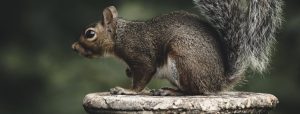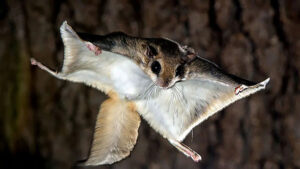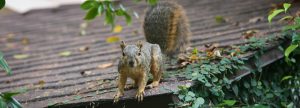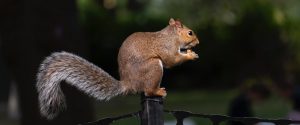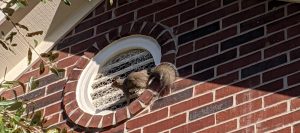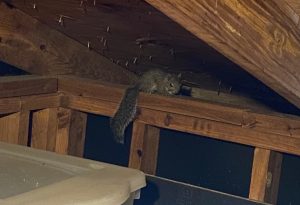There are over 65 species of squirrels (sciuridae) that live in North America, and they are some of the most common animals in urban habitats. You’ve probably even seen one today. But when they’re not dashing around madly in pursuit of nuts, where do these critters live? Well, it depends on the squirrel.
Types of Squirrels
The Sciuridae family includes ground squirrels, chipmunks, marmots, woodchucks, prairie dogs, and flying squirrels. The most prevalent is the tree squirrel specifically the Eastern gray squirrel.
Tree Squirrels
Eastern gray squirrels are the most common nuisance but red squirrels, Eastern fox squirrels, Douglas squirrels, Western gray squirrels, Albert’s squirrels, Arizona gray squirrels, and Western red squirrels are all tree squirrels. As the name suggests, these critters nest and live primarily in tree canopies. Their strong hind legs help with climbing and jumping far distances.
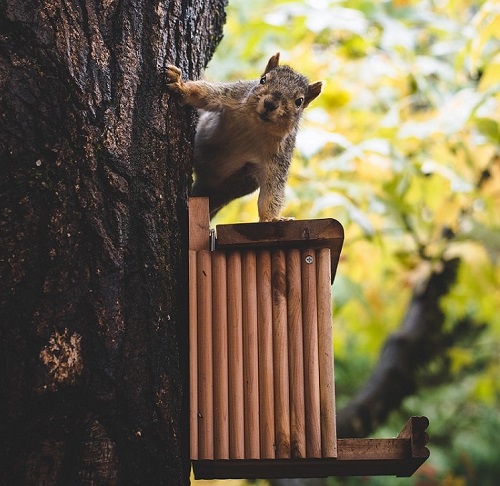
Flying Squirrels
Northern flying squirrels (Glaucomys sabrinus) and southern flying squirrels (Glaucomys volans) are the only two native flying squirrel species found in North America. The most distinguishing difference between flying squirrels and tree squirrels is the membrane that allows flying squirrels to glide. The biggest difference people will notice is flying squirrels are nocturnal. If have a flying squirrel nest in your home, you will hear the critters in the middle of the night.
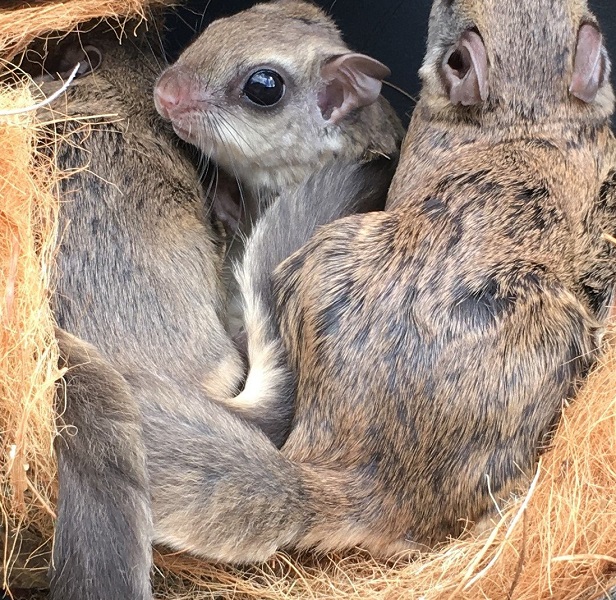
Ground Squirrels
Ground squirrels are active during the day. Ground squirrels live in dens underground. Their short legs and strong claws allow them to dig burrows. There are 38 ground squirrel species native to North America and the most common is the California ground squirrel.
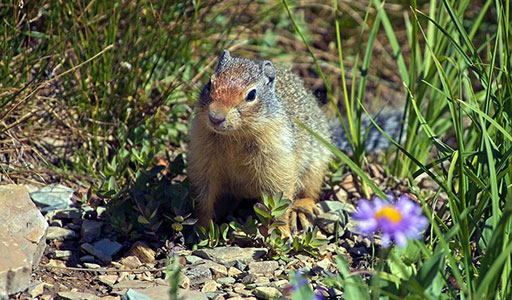
Where Do Tree Squirrels Live?
Tree squirrels, including the exceedingly common eastern gray squirrel, thrive in mature or nearly mature forests, particularly those with at least 50-75% nut and shelter trees, such as oak, hickory, walnut, pecan, elm, and maple trees.
Squirrel Nests
A squirrel nest looks like an oversized clump of twigs and leaves. The interior is hollow and measures eight inches in diameter on average. A nest is typically lined with leaves, grass, moss, and shreds of bark. The exterior shell of the nest is woven together with sticks and leaves for insulation. Squirrel nests are effective in keeping squirrels and their offspring warm and dry.
The eastern gray squirrel (Sciurus carolinensis) is one of the most common tree squirrel species in North America. It thrives in deciduous and mixed forests, as well as suburban and urban areas with mature trees. Eastern gray squirrels build nests called dreys in the forks or branches of trees, usually made of leaves, twigs, and bark. They tend to prefer areas with a variety of tree species, as this provides them with a diverse food source.
The red squirrel (Tamiasciurus hudsonicus) is another tree squirrel species found in North America. It inhabits coniferous forests, including evergreen and mixed forests. Red squirrels construct nests called middens, which are made of leaves, moss, and twigs, located in the branches of conifer trees. They are particularly agile and adapted to climbing trees.
In western North America, the western gray squirrel (Sciurus griseus) prefers mixed coniferous forests, including oak woodlands. They are found along the Pacific coast
Where Do Tree Squirrels Live inside a House?
Tree squirrels enter homes looking for shelter. Some types of squirrels can give birth to two litters in a year. During their breeding period, female squirrels can build nests (dreys) in attics or wall cavities. Homeowners typically notice these litters during late spring/summer and autumn.
In the winter, they are likely to invade homes and other structures to ride out the harsh winter months. Because they do not hibernate, squirrels build caches of nuts to eat. It’s not uncommon to find squirrel caches inside your home after the cold weather.
Squirrels are well known for nesting in attics, as they provide a safe hideaway for squirrels to raise their young. The inside of an attic is also full of things for them to nibble and sharpen their ever-growing teeth on, like wood and insulation. This can create problems—when a squirrel chews the insulation on electrical wiring, for instance, the likelihood of a house fire increases.
Squirrels often choose gutters as nesting sites because they make a good foundation for a nest, and provide ample protection from predators—or at least those without wings. Of course, this superior nesting position comes at a cost—to the homeowner. Squirrel nests in gutters impede water drainage, cause water to back up, and spill over onto siding, which can result in water damage over time.
Wall voids are, as it happens, a near-perfect location for mother squirrels to nest and raise their young. They are dark, rather warm, and removed from both predators and humans alike.
Where do Ground Squirrels Live?
Ground squirrels prefer more open areas including rocky outcrops, fields, pastures, and sparsely wooded hillsides, especially in the southwestern US. They can also be found in more developed areas, such as cemeteries, parks, and golf courses. Different species of ground squirrels have adapted to various regions across the country.
Ground Squirrel Dens
Ground squirrels burrow into the ground, creating massive hideouts 15 to 20 feet long. These tunnels and dens typically have more than one entrance, which are small, two-inch-diameter holes. It is relatively easy to identify ground squirrel holes in the yard, as they are distinct from those of other burrowing pests. These holes are typically clean and devoid of excavated soil, with the surrounding grass worn from continued use.
One common ground squirrel species is the California ground squirrel (Otospermophilus beecheyi), which inhabits the western United States. They prefer open areas with dry, rocky soils, such as grasslands, coastal scrub, and open woodlands. California ground squirrels have complex burrow systems with multiple entrances, providing them protection from predators and extreme weather conditions.
The thirteen-lined ground squirrel (Ictidomys tridecemlineatus) is another prominent ground squirrel species found in the central United States. They inhabit grasslands, prairies, and open areas with well-drained soils. Thirteen-lined ground squirrels dig elaborate burrows with multiple nesting chambers for survival and hibernation.
The Uinta ground squirrel (Urocitellus armatus) dwells in the western United States, primarily in regions with mountainous terrain. They occupy meadows, sagebrush flats, and open areas near mountain slopes. Uinta ground squirrels construct burrows lined with vegetation
Where Do Ground Squirrels Live on Your Property?
Due to the very nature and size of the tunnels themselves, the ground above can collapse over time. Additionally, these holes easily become tripping hazards. Burrows around ornamental trees and other plantings can expedite the drying out of root systems. Finally, ground squirrel holes under structures can erode away the soil, causing issues with foundations.
Ground squirrels create massive tunnel systems that can reach twenty feet in length, and they won’t hesitate to try to do so in your yard. These tunnels systems often have more than one entrance, which take the shape of unsightly holes that are also a tripping hazard. Once established, they will likely enlarge their burrow systems—and the holes that accompany them—each year, so it’s important to address this issue promptly.
Ground squirrels commonly burrow under decks and porches, as they provide an added security measure against predators. If this happens, there are several measures homeowners can take to deter squirrels before calling a professional.
Toggle ContenIf you’re unlucky, a ground squirrel might start burrowing under the foundation of your home. If this excavation is allowed to continue over a long period of time, it can actually weaken the structural integrity of your home, so it is imperative to address this issue as soon as it becomes apparent. If you’re worried that squirrels on your property might be causing damage, give our team of experts at Trutech a call. We’ll work around your schedule to rectify the issue swiftly and humanely.t
Squirrel Control
Once a squirrel population has established itself, deterrents and repellents are not effective.
Limiting food sources is one of the best ways to prevent a squirrel problem. Bird feeders consistently attract squirrels to your yard. Securing any gaps along your roof line, roof vents, or fascia boards can keep flying squirrels and tree squirrels out of your house.
Ground squirrels require different control measures than tree and flying squirrels. Since their tunnel and burrow systems are so vast, successful trapping can be difficult.
Professional Squirrel Trapping
Regardless of the type of squirrel, Trutech Wildlife Service has an effective and humane squirrel trapping system. Once the squirrels have safely been trapped and removed, we install a custom exclusion program to keep squirrels out of your attic, walls, off your roof, or out of your yard.


